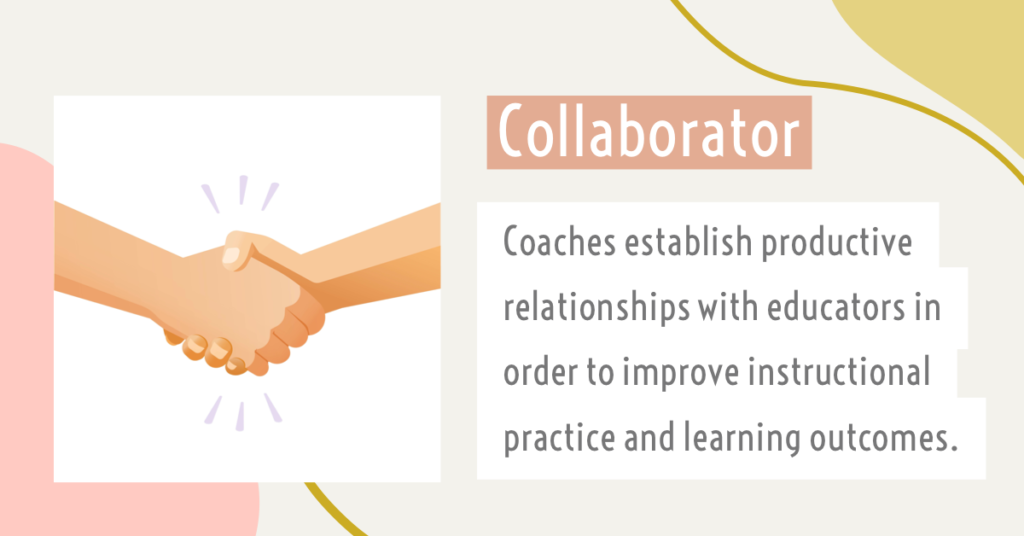3b

One way that coaches can partner with educators to identify appropriate digital learning content is by using frameworks. SAMR, TPACK, and a Lesson Design Matrix can help guide educators in integrating technology in a meaningful way. These three frameworks focus on content and pedagogy first. Technology should be a tool that assists students learning, but should not become the focus of the lesson itself (Foltos, 2013, p. 136). To dive in deeper, check out my blog post: Resources for Meaningful Tech Integration.
Another topic that was new to me was Culturally Responsive Pedagogy (CRP). During my studies, I was able to explore this topic more and discuss how we can help all learners be successful by mimicking students’ cultural learning styles and tools (read more here). One example of a cultural learning style is oral traditions. A lot of cultures, such as African American, Latino, Southeast Asian, and Pacific Islander, have strong oral cultures. Their primary ways of knowledge transfer and meaning-making is based on interacting with the information in a social, active, and oral way (Hammond, 2015). Therefore, we can tap into these cultural learning styles to help our students with diverse backgrounds make meaning of the content in ways that will stick. Researching Culturally Responsive Classrooms helped me embark on a personal journey where I started to identify my own personal bias and examine curriculum and instructional practices with a critical lens. Does the curriculum reflect the diverse range of students in my classroom? Does my language support all students’ making sense of the content? Next time I am back in a classroom I am excited to create a more inclusive space by purposefully teaching about bias, culture, and race through curriculums like the one developed by Teaching Tolerance and by featuring a more diverse classroom library.
One example of how I partnered with educators to identify digital learning content that was culturally relevant, developmentally appropriate and aligned to content standards is when I collaborated with the fourth-grade team at my old school to design a service-learning project focused on civic engagement and persuasive writing. The unit was meant to raise awareness of issues in our community such as poverty, environmental issues, the foster care system, etc. Students chose organizations to research and volunteer with and ended up creating multi-media projects that educated their audience and called for action. The teachers and I worked hard to identify resources and tech tools that were developmentally appropriate and aligned with standards but still allowed students agency and choice. Read more about the unit here. The following evidence is a conference proposal for NCCE that explained our service learning project and encouraged other educators to explore new instructional strategies.
IGNITE-Presentation-Information-1To read more about my work with this standard, you can use the drop-down menu above or the buttons below to navigate to a specific performance indicator.
Works Cited
Foltos, L. (2013). Peer Coaching: Unlocking the Power of Collaboration. Corwin.
Hammond, Z. (2015, April 1). 3 Tips to Make Any Lesson More Culturally Responsive. Cult of Pedagogy. https://www.cultofpedagogy.com/culturally-responsive-teaching-strategies/
ISTE Standards for Coaches (n.d.). Retrieved from: https://www.iste.org/standards/for-coaches
